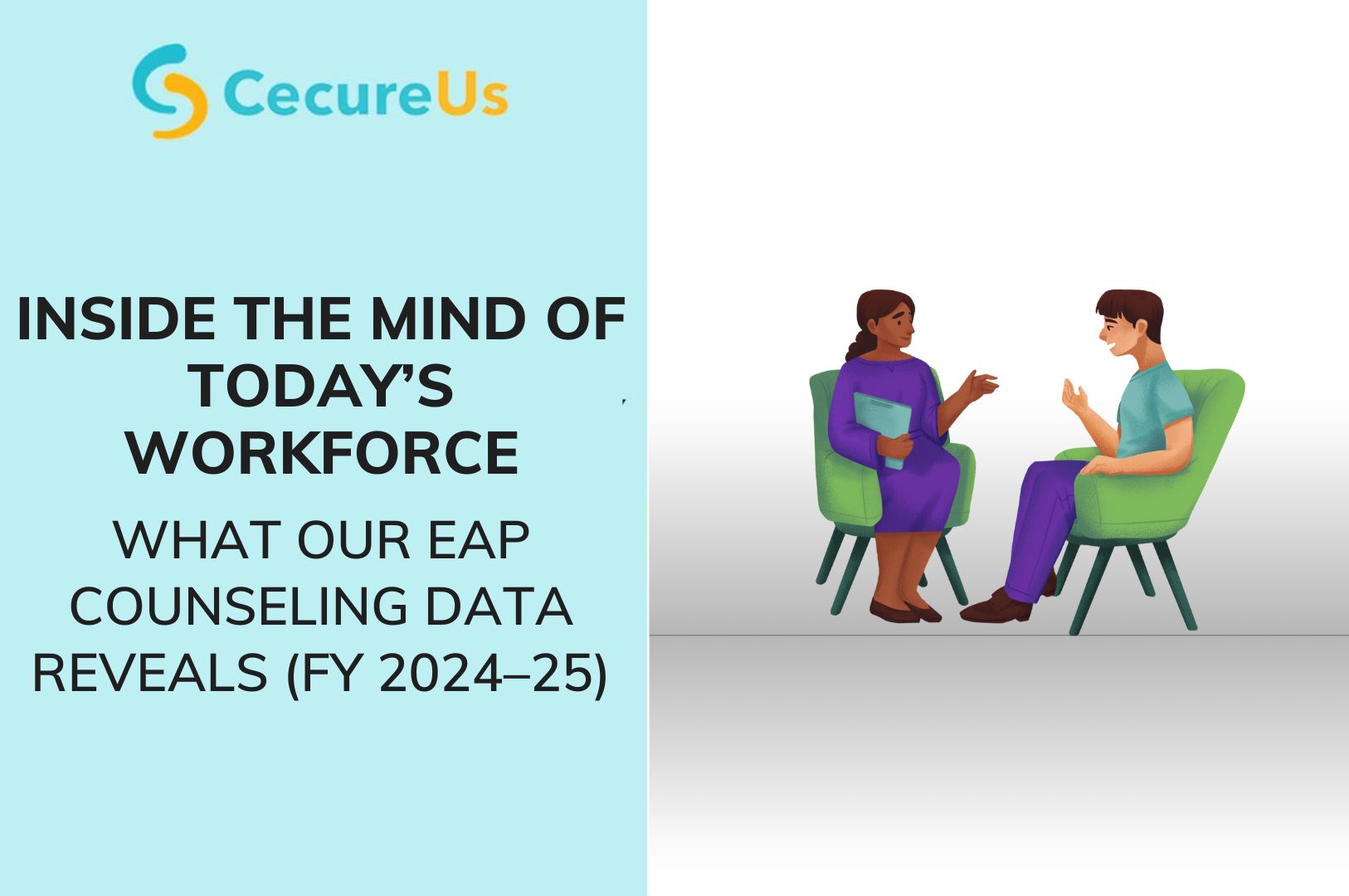
08 May Inside the Mind of Today’s Workforce: What Our EAP Counseling Data Reveals (FY 2024–25)
As organizations increasingly prioritize employee well-being, Employee Assistance Programs (EAPs) have become more than just a benefit—they’re a window into the emotional and psychological climate of the workplace.
At CecureUs, we supported thousands of employees through our confidential counselling services over the last financial year. The data we gathered offers valuable insights for every HR leader, DEI champion, and business head looking to build a mentally healthy workplace.
The Emotional Pulse of the Workplace
- Stress & Anxiety Dominate
- 34% of all counselling sessions focused on stress and anxiety.
- 71% of these users were women, highlighting a heavier emotional burden often carried by female employees.
➡️ Emotional fatigue remains a major challenge, especially for women balancing professional demands with invisible labor at home.
Relationship Challenges Are Universal
- 28% of sessions were related to relationship issues—personal, workplace, and marital.
- Interestingly, 58% of those seeking support in this category were men, versus 42% women.
➡️ Emotional intelligence, communication struggles, and unresolved conflict at home or work can directly affect focus and performance.
Parenting Pressures Are Rising
- 10% of sessions addressed parenting-related concerns.
- Many working parents—especially in hybrid roles—are feeling stretched and seeking emotional support to better balance their dual roles.
Depression & Emotional Fatigue Require Urgent Focus
- A significant number of sessions were tied to depression and emotional burnout, reinforcing the need for early intervention and long-term mental health support frameworks.
Additional Key Insights
- 55% of all users accessing counselling were women.
- Most employees seeking help were in the 30–45 age group, a critical demographic for workforce productivity.
- 30% of English-speaking employees preferred counselling in their native language, indicating the value of culturally sensitive support.
- 7% of all complaints received were classified as critical, requiring immediate response and follow-up care.
Why This Matters for Employers
These numbers aren’t just statistics—they represent real people facing real struggles. They show that today’s employees are not just chasing performance metrics, they’re looking for emotional resilience, balance, and a culture that supports their whole selves.
What HR and Leadership Can Do
✅ Normalize mental health conversations
Foster a culture where saying “I’m not okay” is met with empathy—not stigma.
✅ Strengthen EAP awareness year-round
Keep visibility high, not just during wellness weeks. Make sure employees know it’s safe, confidential, and accessible.
✅ Equip managers with emotional intelligence tools
They are your first line of support. Train them to identify distress, hold space, and refer early.
✅ Don’t overlook men’s mental health
Men may delay seeking help. Design inclusive campaigns that actively reach them without judgment.
✅ Respect language and cultural preferences
Make counselling available in regional languages to deepen impact and comfort.
Final Thought
At CecureUs, we believe that a safe, productive workplace isn’t just built through compliance checklists—it’s built through compassion, connection, and consistency.
Let’s use these insights to design healthier, kinder, and more resilient workplaces in FY 2025–26—where mental health is not a one-off initiative but an everyday priority.
Because behind every data point is a human being—seeking to be heard, helped, and understood.

